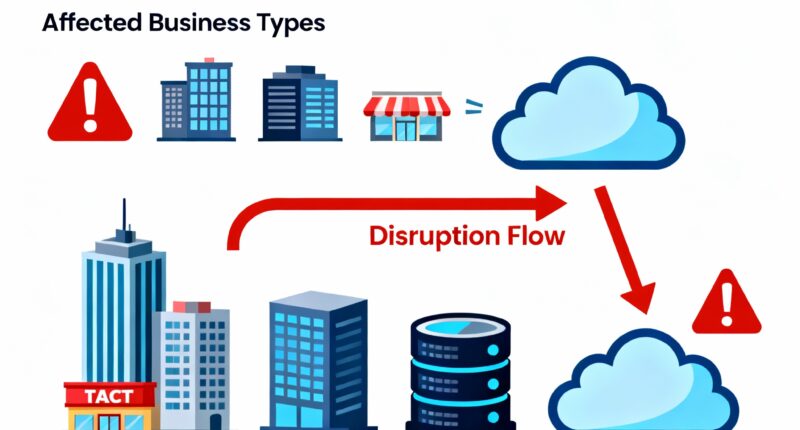Lessons Learned for Business Continuity in a Digital Era
Introduction: The Importance of Cloud Reliability
In today’s digital-first world, businesses of all sizes depend on cloud platforms like Amazon Web Services (AWS) to power critical operations, host applications, and manage vast amounts of data. While cloud computing brings agility, scalability, and global reach, it also exposes companies to new vulnerabilities—none more vividly highlighted than during an AWS cloud outage. In 2025, a high-profile AWS service disruption sent shockwaves through a range of sectors, serving as a wake-up call for organizations banking on always-on infrastructure.
What Happened During the AWS Cloud Outage?
Scope and Impact of the Disruption
The 2025 AWS outage, caused by configuration issues and unexpected spikes in network traffic, affected services such as EC2, S3, and Lambda across several regions. High-traffic websites, fintech apps, and retail platforms experienced downtime, data access delays, and transaction failures. The outage not only caused financial losses but also damaged customer trust and demonstrated the interconnected nature of today’s digital landscape.
-
Global Reach: With AWS underpinning everything from e-commerce to healthcare, the incident disrupted both small businesses and Fortune 500 companies.
-
Downtime Costs: Studies estimate that each minute of downtime costs organizations thousands in lost sales and productivity.
-
Brand Impact: Highly visible service failures generate negative press and social media buzz, impacting brand reputation.
Lessons Learned for Business Continuity
1. Embrace Multi-Cloud and Hybrid Strategies
Relying solely on one cloud provider can create a single point of failure. Businesses should diversify by adopting multi-cloud or hybrid cloud strategies, blending AWS with alternatives like Google Cloud Platform or Microsoft Azure.
-
Cross-Cloud Redundancy: Store backup data and run critical applications across multiple cloud vendors for resilience.
-
Hybrid Deployments: Maintain essential processes on-premises or in private clouds to reduce dependency on external platforms.
2. Implement Robust Disaster Recovery Plans
Disaster recovery and business continuity planning are essential for swiftly handling outages.
-
Automated Backups: Schedule frequent, automatic data backups and test restoration processes regularly.
-
Failover Mechanisms: Design applications for failover—automatically rerouting traffic or workloads to unaffected servers in case of disruption.
-
Clear Communication Protocols: Prepare predefined messages to keep stakeholders, partners, and customers informed during outages.
3. Monitor and Test Continuously
Proactive monitoring and regular testing help businesses identify and address vulnerabilities before a crisis.
-
Third-Party Monitoring: Use independent monitoring tools to detect service status and latency, supplementing cloud provider dashboards.
-
Simulated Outages: Conduct “chaos engineering” drills—deliberate, controlled failures to test how systems respond under pressure.
-
Security Audits: Regularly review access controls, permissions, and security policies to prevent breaches that could compound technical outages.
4. Prioritize Communication and Customer Trust
During outages, transparent and prompt communications are crucial for maintaining trust.
-
Status Pages: Maintain real-time status updates for customers, including progress reports and estimated resolution times.
-
Post-Incident Reviews: Analyze root causes openly and outline remedial steps for clients and users.
-
Customer Support: Ramp up support channels during crises to handle inquiries and mitigate frustration.
Conclusion: Preparing for the Next Digital Disruption
The 2025 AWS cloud outage was a stark reminder that even leading cloud providers are not immune to disruptions. For modern businesses, robust business continuity strategies, technical safeguards, and transparent customer communications are non-negotiable. By learning from past incidents and implementing diversified, tested, and proactive resilience plans, organizations can minimize risk, protect brand reputation, and ensure uninterrupted service in the ever-evolving digital era.










9 comments
Thanks
Good
Thank 7
Thank. 21.10.25
Wonder what will be the next vulnerable cloud provider like AWS (Amazon Web Services).
Thanks for the article
Thankfully.
👍👍👍
I read the letter every day.